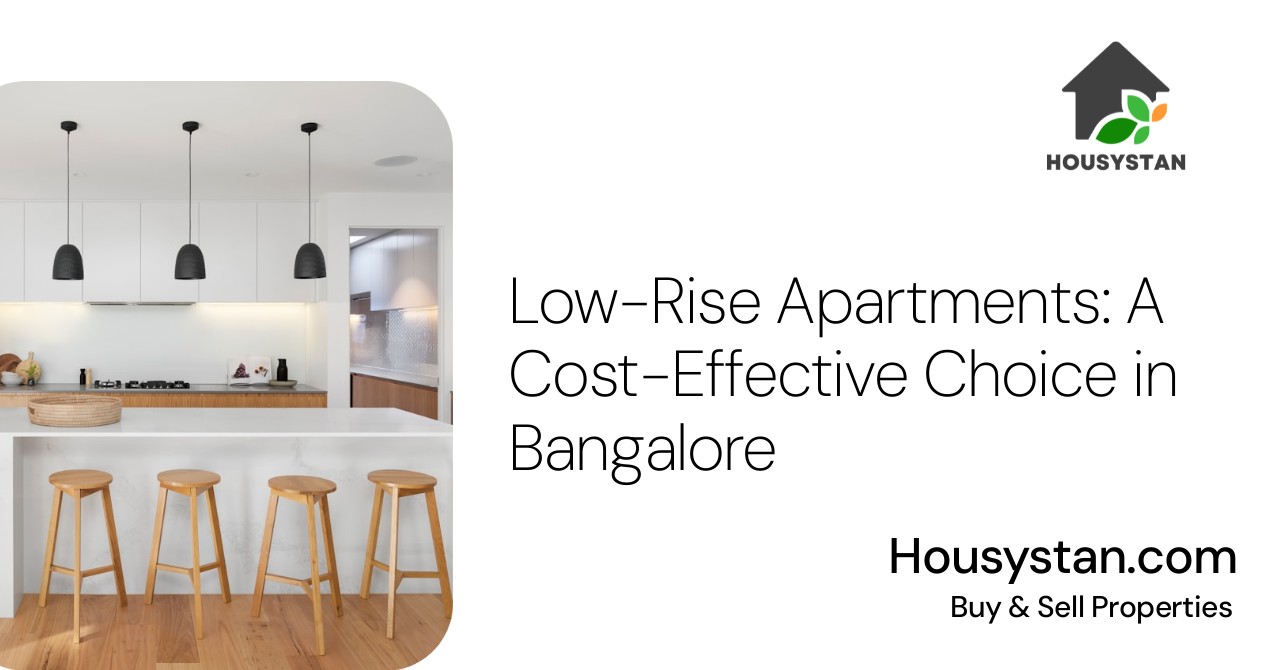Low-Rise Apartments: A Cost-Effective Choice in Bangalore
Read latest blogs and articles from Housystan

The Information mentioned here was last updated on:
14/12/2025Low-rise apartments in Bangalore have emerged as a popular and cost-effective housing option for homebuyers seeking comfort, affordability, and convenience within India’s thriving tech hub. As the city expands, the demand for residential spaces that strike a balance between modern amenities and budget-friendly living continues to grow. Choosing a low-rise apartment in Bangalore offers numerous benefits tailored to the needs of families, working professionals, and investors looking for long-term value.
Unlike high-rise towers, low-rise complexes generally feature fewer floors, often ranging from two to four stories. This structure creates a more intimate environment, fostering community interaction and a sense of security. Residents enjoy reduced population density, leading to less congestion in common areas and better privacy. For families with children or elderly members, the accessibility of low-rise buildings—often equipped with staircases and sometimes elevators—ensures safety and convenience without the hassle of waiting for crowded lifts.
Another significant advantage is affordability. Construction and maintenance costs for low-rise apartments in Bangalore are typically lower than those associated with high-rise buildings. This translates to more reasonable pricing for buyers and tenants, making these homes an ideal choice for first-time homeowners or individuals relocating to Bangalore for work in the city’s prominent IT corridors such as Whitefield, Electronic City, Sarjapur Road, and Hebbal. Additionally, lower maintenance expenses contribute to long-term savings, further enhancing the value proposition for residents.
- Verified Tenants/Buyers
- Unlimited Property Listing
- Zero subscription/charges fee
Low-rise apartments often offer spacious layouts and green surroundings, providing a peaceful retreat from the city’s hustle. Many such communities include landscaped gardens, dedicated play areas, and essential amenities, ensuring a comfortable lifestyle without compromising on quality. Their strategic locations in well-connected neighborhoods grant easy access to schools, hospitals, public transport, and shopping centers, making daily commutes efficient and hassle-free.
For those seeking a blend of affordability, functionality, and a serene living atmosphere in Bangalore, low-rise apartments stand out as an excellent choice. With the city’s real estate market poised for continued growth, investing in such properties provides both immediate comfort and promising future returns. Explore low-rise living in Bangalore and experience the perfect combination of cost-effectiveness, convenience, and community-centric living.